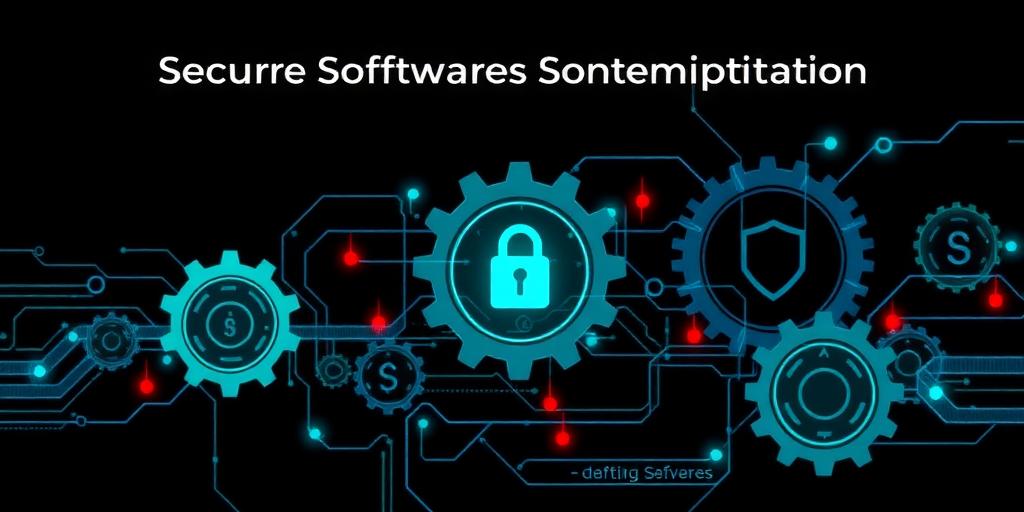Establishing a Secure Software Development Lifecycle (SDLC): A Strategic Imperative
In today's interconnected digital landscape, software is the bedrock of business operations, innovation, and customer interaction. Yet, the persistent threat of cyberattacks underscores a critical reality: security cannot remain an afterthought. A robust and secure Software Development Lifecycle (SDLC) is not merely a best practice; it is a fundamental strategic imperative for any organization aiming to build resilient, trustworthy applications.
This authoritative guide delineates the essential components and strategic considerations for embedding security into every phase of the SDLC, transforming it from a reactive measure into a proactive, integrated process. The goal is to cultivate a security-first mindset that permeates the entire development pipeline.
The Paradigm Shift: From SDLC to Secure SDLC (DevSecOps)
Traditionally, security testing was often relegated to the end of the development cycle, a practice that inevitably led to costly, time-consuming remediation of vulnerabilities discovered late in the game. The concept of a Secure SDLC — often synonymous with DevSecOps — represents a fundamental shift. It advocates for the "shift left" approach, integrating security controls and practices from the initial planning stages through to deployment and ongoing maintenance.
Core Principles of a Secure SDLC
Building security into software from the start demands adherence to several guiding principles:
- Security by Design: Proactively consider security requirements and potential threats during the architectural and design phases.
- Early and Continuous Integration: Implement security activities at every stage, not just at the end.
- Automation: Automate security testing and checks wherever possible to improve efficiency and consistency.
- Collaboration: Foster strong collaboration between development, operations, and security teams.
- Continuous Improvement: Regularly review and refine security processes based on lessons learned and evolving threats.
Integrating Security into Each SDLC Phase
1. Requirements and Planning: Define Security Early
The foundation of a secure software development process begins here. Security requirements must be clearly articulated and prioritized alongside functional requirements.
- Threat Modeling: Identify potential threats, vulnerabilities, and attack vectors relevant to the application.
- Security Requirements Gathering: Define explicit security requirements (e.g., authentication, authorization, data privacy, input validation) based on compliance, risk assessment, and business needs.
- Risk Assessment: Prioritize risks based on likelihood and impact.
2. Design: Architect for Resilience
Security flaws introduced during the design phase are the most challenging and expensive to rectify later.
- Security Architecture Review: Ensure the application's architecture inherently supports security requirements.
- Principle of Least Privilege: Design components and users with the minimum necessary access.
- Secure Defaults: Ensure default configurations are secure.
- API Security Design: Design secure APIs with proper authentication, authorization, and rate limiting.
3. Implementation/Coding: Write Secure Code
This phase is where secure coding practices are paramount.
- Secure Coding Guidelines: Adhere to established secure coding standards (e.g., OWASP Top 10 mitigation strategies).
- Static Application Security Testing (SAST): Use automated tools to analyze source code for common vulnerabilities without executing the code. Integrate SAST into CI/CD pipelines.
- Peer Code Reviews: Include security experts in code reviews to identify vulnerabilities and enforce best practices.
- Dependency Scanning: Utilize Software Composition Analysis (SCA) tools to identify vulnerabilities in third-party libraries and open-source components.
4. Testing: Validate Security Effectiveness
Rigorous testing is crucial to identify weaknesses before deployment.
- Dynamic Application Security Testing (DAST): Test the running application for vulnerabilities, simulating external attacks.
- Interactive Application Security Testing (IAST): Combine elements of SAST and DAST, monitoring application behavior during execution.
- Penetration Testing (Pen-Testing): Conduct ethical hacking simulations to find exploitable vulnerabilities.
- Vulnerability Scanning: Scan network infrastructure and deployed applications for known vulnerabilities.
- Fuzz Testing: Input large amounts of random data to crash or uncover vulnerabilities in the application.
5. Deployment: Secure Configuration and Environment
The deployment phase requires careful attention to the operational environment.
- Secure Configuration Management: Ensure servers, databases, and application environments are securely configured.
- Infrastructure as Code (IaC) Security: Scan IaC templates for misconfigurations before deployment.
- Container Security: Scan container images for vulnerabilities and enforce least privilege.
- Web Application Firewalls (WAFs): Deploy WAFs to protect against common web attacks.
6. Maintenance and Monitoring: Continuous Vigilance
Security is an ongoing process, not a destination.
- Continuous Monitoring: Implement logging, monitoring, and alerting for security events.
- Incident Response Plan: Have a clear, well-rehearsed plan for responding to security incidents.
- Vulnerability Management: Regularly patch and update software, dependencies, and infrastructure.
- Regular Audits: Conduct periodic security audits and reviews to ensure compliance and identify new risks.
Tools and Technologies for Secure SDLC
Leveraging the right tools is critical for effective integration of security:
- SAST Tools: SonarQube, Checkmarx, Fortify
- DAST Tools: OWASP ZAP, Burp Suite, Acunetix
- SCA Tools: Snyk, WhiteSource, Black Duck
- Threat Modeling Tools: Microsoft Threat Modeling Tool, OWASP Threat Dragon
- WAFs: Cloudflare, Akamai, AWS WAF
- SIEM Systems: Splunk, ELK Stack, LogRhythm
Building a Security-First Culture
Technology alone is insufficient. A truly comprehensive SDLC security strategy hinges on people. Cultivating a security-first culture involves:
- Training and Awareness: Educate developers, testers, and operations teams on secure coding practices and common vulnerabilities.
- Security Champions: Designate individuals within development teams to promote and embed security.
- Clear Policies and Procedures: Document and enforce security policies.
Conclusion: The Imperative of Proactive Security
Embedding security throughout the Software Development Lifecycle is no longer optional; it is a prerequisite for building reliable, secure, and resilient applications. By adopting a 'shift left' mentality, leveraging automated tools, fostering cross-functional collaboration, and cultivating a pervasive security culture, organizations can significantly reduce their attack surface, mitigate risks, and ensure the integrity and trustworthiness of their software products. The investment in a secure SDLC is an investment in long-term operational integrity and reputation.




